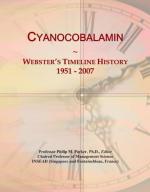|
This section contains 813 words (approx. 3 pages at 300 words per page) |

|
Overview
Cyanocobalamin (sye-AN-oh-koh-BAL-uh-min) is more commonly known as vitamin B12. At least three active forms of the vitamin are known. They include hydroxocobalamin and nitrocobalamin, in addition to cyanocobalamin, all with slightly different molecular structures. Cyanocobalamin occurs as dark red crystals or a red powder that is odorless and tasteless. When heated, the compound darkens above 200°C (392°F), but does not melt when heated further.
Key Facts
Other Names:
Cobalamin; vitamin B12
Formula:
C63H88CoN14O14P
Elements:
Carbon, hydrogen, cobalt, nitrogen, oxygen, phosphorus
Compound Type:
Heterocyclic ring (organic)
State:
Solid
Molecular Weight:
1355.36 g/mol
Melting Point:
Undetermined; greater than 300°C (575°F)
Boiling Point:
Not applicable
Solubility:
Soluble in water in alcohol; insoluble in acetone, ether, and chloroform
Cyanocobalamin is required for the synthesis of DNA in cells and for the proper functioning of red blood cells and nerves. A deficiency of vitamin B12 in the diet...
|
This section contains 813 words (approx. 3 pages at 300 words per page) |

|


